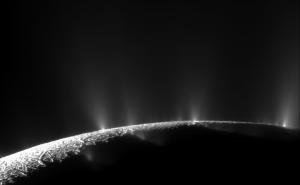The most recent spacecraft telemetry was acquired on June 7 from the Deep Space Network tracking complex at Goldstone, California. The Cassini spacecraft is in an excellent state of health and all subsystems are operating normally.
Information on the present position and speed of the Cassini spacecraft may be found on the “Present Position” page at: http://saturn.jpl.nasa.gov/mission/presentposition/. The most recent spacecraft telemetry was acquired on June 7 from the Deep Space Network tracking complex at Goldstone, California. The Cassini spacecraft is in an excellent state of health and all subsystems are operating normally.
Friday, June 3 (DOY 154)
The Downlink Ground System (DGS) team delivered the Java Distributed Object Manager (DOM) scripts last week, which completed phase 1 in the DOM transition to the Network File System (NFS). The new DOM scripts are operational and being closely monitored in preparation for the transition of the Cassini DOM off of the legacy Andrew File System (AFS), scheduled to occur on Wed., June 8.
Saturday, June 4 (DOY 155)
The Instrument Operations/Multi Mission Image Processing Laboratory (IO/MIPL) lab-wide image display (JEDI) server was unavailable this week, which allowed developers the opportunity to test an upgrade to the application.
Sunday, June 5 (DOY 156)
This week in science, while out at the distant apoapsis part of the orbit, the Cosmic Dust Analyzer (CDA) completed two more of the interstellar dust observations. The Imaging Science Subsystem (ISS), Composite Infrared Spectrometer (CIRS) and the Visual and Infrared Mapping Spectrometer (VIMS) performed an observation in the Titan monitoring campaign to monitor clouds and look for changes in the surface and atmosphere. ISS also performed astrometric observations of the small moons Anthe, Prometheus, Calypso, Helene and Janus, and five images were taken for Optical Navigation. Finally, ISS and the other remote sensing instruments performed a 13.5 hour Iapetus observation during a unique opportunity to observe the south polar region of the yin-yang moon from the rather distant encounter of ~863,000 km.
Monday, June 6 (DOY 157)
JPL hosted news media representatives today to cover a major Tweetup event. More than 100 NASA Twitter followers attended this all-day event. Cassini’s Senior Outreach Specialist, the Cassini twitterer who has over 100,000 followers, hosted the Cassini twitter.
Tuesday, June 7 (DOY 158)
A mission planning forum was held today to discuss the reference trajectory update developed by the navigation team. This update covers fiscal years 2013 and 2014, incorporates updates to the satellite ephemerides since the original Solstice Mission reference trajectory was developed, allows for minor changes in DSN tracks and maneuver locations, and minimizes any resulting changes to targeted flybys. Science teams will use this release to compare the updated reference trajectory to the current in-use trajectory. The official reference trajectory will be released before the end of the fiscal year once navigation reviews any feedback from the science teams and completes their analyses.
































